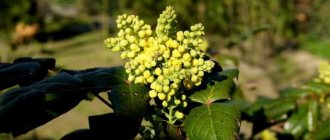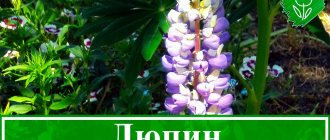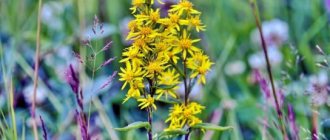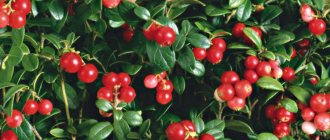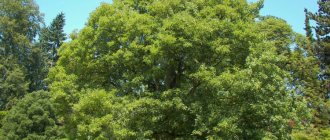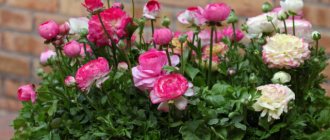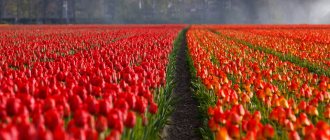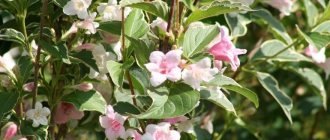A bright and beautiful decoration of the fields is the poppy flower - a wild representative of a huge family of plants. He is revered in many countries of the world, endowing him with various powers and energy. If desired, the plant can be grown on your own site, observing certain requirements.
Types and varieties of plants, appearance
Poppy loves light; its developed stem reaches from 45 to 150 cm in height. Annual and perennial poppies are cultivated in nature. The flower can be of different colors: white, soft pink, red, even black. It has whole or dissected leaves, on which there are small terry or even hairs. It fades quickly, in 2-3 days.
It reproduces using an oblong capsule that appears after flowering and falling leaves. The seeds are placed in the box.
Annual poppies, their varieties:
- Sleeping pill or opium - up to 150 cm in height, with green, silvery leaves with a bright waxy coating. Flowers come in crimson, purple, red, pink and black.
- Peony soporific poppy is a terry variety of soporific poppy. It has spherical flowers, the dark purple, almost black color of the plant is striking in its beauty. Leaves with jagged edges are red, pink, or cream striped.
- The photo of wild poppy is amazing. It is self-seeding, covers entire fields, and captivates the eye. An annual plant with small, silky, bright red flowers with a dark spot in the middle. There may be cream, apricot, orange and pink varieties.
- The ornamental variety Surrey has simple and double flowers with a white spot in the middle.
- Variable or Caucasian grows to 40-50 cm tall, leaves drooping, flowers red, with a black mark at the base.
There are the following varieties of perennial poppies:
- Oriental poppy - grows up to one and a half meters in height and width, with double and single flowers up to 20 cm in diameter. Found with bright red flowers. As a result of breeding work, garden varieties have been grown with flowers of delicate salmon, plum, and red-orange colors without a spot at the base. Popular varieties are Karine - a poppy with a large round salmon-colored flower with a red spot, Pizzicato - a variety with large flowers and a dark spot, and the new Royal Weddinq - an ornamental variety.
- Alpine poppy is up to 50 cm tall, forms a whole bunch of dissected leaves, has single flowers with a diameter of up to 4 cm. Such poppies come in red, orange, yellow, and white.
- Holostem poppy, or Icelandic poppy, is a perennial plant 50-75 cm in height with large flowers of different shades of cream, yellow, orange and red. The leaves are gray-green, pubescent.
- A rare poppy, suitable for cutting. Since the plant is very short-lived (2-3 years), it is often grown as a biennial.
A species called rock-breaker also belongs to the biennial species. The height of the poppy is up to 45 cm, it lives in Asia Minor and the Caucasus.
The poppies (photos of flowers in the section below) are very beautiful, proud, but quickly fade.
Plant care
Poppies can do without any care at all . They tolerate even dry summers well. Exceptions are young (up to 1 month) annuals and perennial plants of the first year of life. On the other hand, you shouldn’t completely forget about poppies either. Providing them with conditions that are somewhat more comfortable than the minimum can significantly increase the number of flowers formed and the duration of flowering.
Blooming poppy flower
If we are talking about obtaining seeds for cooking, then in this case caring for the plants becomes mandatory, since the yield is directly proportional to the number of flowers set and ripened fruits.
The main thing in caring for poppies is working with the soil. Young plants require regular weeding and loosening of the soil so that they can compete with other plants around them.
Plants with tall stems, especially those on which fruit pods ripen, are recommended to be tied to pegs driven in next to them.
Watering
Watering will be especially important for plants planted in early spring in the first two months of their life. Plants planted in autumn especially require watering during the active growing season (April-May, less often June).
It should be done strictly at the root using a narrow watering can so that moisture does not fall on the leaves of the plant. In addition, there should not be a lot of water. The purpose of watering is not to moisten the soil, but not to let it dry out.
During the active growing season, poppy seeds need to be watered at the root.
It is recommended to water poppies once a week; The water consumption should be 5 liters per square meter. m plot. During the growing season, the watering rate is increased. If the weather is hot, then the frequency of watering is reduced to 4 days, and the consumption is left the same. In normal weather, the frequency remains equal to one week, and water consumption increases to 7-10 liters per 1 sq. m depending on the degree of soil moisture.
It is best to water in calm, cloudy weather or in the evening just before sunset.
Loosening and weeding
Typically, both procedures are carried out immediately after watering. In some cases, there may not be any watering because the soil is still wet. But loosening the soil should be done constantly at the same frequency - once a week.
Several times a month you need to weed the poppy, ridding the ground of weeds
Loosening is carried out to a depth of about 2-3 cm , with the goal of ensuring air access to the roots of the plant.
Weeding is done as needed, that is, when new weeds appear. Typically, it is carried out once every two weeks and is performed during the next loosening. Not only the areas around the bushes are subject to weeding, but also the space between the rows.
Feeding
Poppy is fed several times a season. Each time, fertilizing of the same composition is used that was discussed earlier when planting seeds.
Blooming poppy
In total, poppy is fed 3-4 times per season:
- The first fertilizing is done during planting (in the second ten days of March for bi- and perennial plants)
- the second feeding corresponds to the main phase of active vegetation and is carried out in mid-April
- the third feeding is carried out at the beginning of flowering
- the fourth is applied 1-2 weeks after the end of flowering
The last fertilizing should not contain any nitrogenous fertilizers, therefore organic and mineral components containing nitrogen should be excluded.
Where and how they grow
Poppies grow in temperate, subtropical zones, in Russia on Lake Baikal. In arid areas, self-seeded poppies can often be observed occupying large areas. The most suitable climate for flowers is in the Caucasus and Central Asia.
Most species are used for garden design; they can be planted in the countryside or in residential areas, but there are those that are prohibited. These include oriental, bristlecone, hypnotic. Poppy crops with a large boll are immediately destroyed. Safe plants include self-sowing, modified, peacock, and holostem. Planting and growing these poppy varieties is not prohibited.
Holostem poppy begins to bloom in autumn and ends in late autumn. Poppies look especially beautiful if planted among other flowers. The poppy flower (photo in a large selection below in the special section) is unassuming, but very beautiful and varied.
Legends and origin story
There are many beautiful legends telling about the origin of a passionate flower with delicate velvet petals that can put you to sleep.
One of them says that when God created the earth, water, flora and fauna, everything turned out very beautiful. But under the cover of night these beauties were hidden. Night tried to open them for its hour with the help of the stars, but this attempt was unsuccessful. And then God decided to help the Night and created the Sleep and its dreams.
Over time, because of their cruelty, people began to have not only good dreams, but also terrible dreams and nightmares. Then Dream, in desperation, thrust his magic rod into the ground, plunging him into sleep. The rod came to life and turned into a poppy, without losing its ability to put one to sleep and cause visions. Since then, poppies have been considered dream-inducing plants.
According to another legend, the poppy is a symbol of earthly fertility and marriage due to its extreme fertility - its capsule contains up to 30 thousand small seeds that give life to new plants.
Many gods are depicted decorated with poppies. The goddess of earthly fertility, Persephone, is depicted wrapped in intertwined poppy flowers. The Greek god of dreams and reveries Hypnos (among the Romans - Morpheus) is depicted holding poppy heads in his hands or crowned with a wreath of these flowers. On the head of the God of Death Thanatos - a young man with black wings, wearing black clothes - also rests a wreath of poppy flowers. And this is not a complete list.
It is obvious that this seemingly simple flower is capable of making an impression. It entered the history and religion of different countries and many peoples due to its ability to induce sleep.
Benefit
The benefit of poppy lies in the content of vitamins, microelements, and minerals that have a beneficial effect on the human body. Calcium minerals are positively and easily absorbed. The seeds of this plant are used in the preparation of infusions, which are taken for nervous diseases, for restful sleep, to relieve fatigue, and for convulsive coughs.
Poppy is also an anthelmintic and is useful for diarrhea. Poppy products are used in cosmetology, and milk of poppy is a food for vegetarians. In addition, poppy seeds are high in calories.
Interesting facts about the poppy flower
To get to know this flower even better, it will be interesting to know a few facts about it:
- In Germany, the seeds of this flower are poured into the bride's wedding shoes so that there are many children in the family.
- Red poppy is a flower that has been used as a spice since the Neolithic era.
- In northern Russia there are yellow flowers of this species that can survive under ice.
- The poppy flower with a blue bud grows in the Himalayas. Its flowering period is three weeks.
- During the reign of Charlemagne, tribute was collected using poppy seeds.
- Red poppy is listed in the Red Book, so you should not pick it in the wild.
- Various medications (painkillers, cough and cancer medications) are made from the seeds of the sleeping pill poppy.
- Calorie content of 100 g of seeds – 525 kcal.
- Milk of the poppy can be used as a compress for problems with the skin under the eyes.
Application
- The taste of poppy seeds is used in cooking. It is added to sauces, sprinkled on baked goods and confectionery products, increasing the nutritional value of products. Poppy oil is also used in cooking.
- In medicine, poppy is used as a sleeping pill; it contains morphine, codeine, and papaverine. Morphine has analgesic properties. Codeine calms severe coughs. Papaverine relieves spasms of arteries, muscles, and bronchi.
- In folk medicine, self-seeding is used, infusions and decoctions are made, and diarrhea, dysentery, and bladder diseases are treated.
- Milk of the poppy is used by supporters of proper nutrition and vegetarians.
- Essential oils are used in cosmetology. Due to the presence of stearic, oleic, linoleic acids, vitamin E, codeine, morphine and papaverine, the oils are ideal for the production of cosmetic anti-aging and moisturizing products.
Useful and harmful properties
The medicinal properties of the unique poppy plant have been known since ancient times. Poppy seeds normalize the digestive system and relieve dysentery and diarrhea. Using them, you can get rid of insomnia and eliminate some diseases of the upper respiratory tract. Poppy is also widely used in the treatment of cancer.
The harm of poppy is due to its unreasonable use by the person himself. This magical flower serves as the basis for the production of opiates, the excessive use of which leads to drug addiction, destroying the human psyche and bringing terrible suffering to the addict.
Poppy seeds are widely used in cooking as additives in baked goods and a wide variety of sweets and cookies. At the same time, the beneficial properties of poppy seeds are completely preserved provided that they are properly collected and dried without any trace of narcotic substances in them.
The leaves, roots and stems of the plant are used only in medicine . They are not eaten.
Harm and contraindications
It is not recommended to self-medicate with drugs or infusions made independently based on poppy seeds. This can be done after consulting a doctor or under his supervision. You cannot use the seeds of the plant for diseases such as asthma, alcohol addiction, gallstone pathologies, and emphysema. Poppy is also contraindicated for constipation; it can worsen it.
Children under 2 years of age and elderly people are not recommended to eat confectionery products with poppy seeds.
The legend of the poppy flower
There are different legends in the world, for example, one of them tells how the wild (decorative) poppy flower appeared. When the Lord finished creating the earth, everyone except the night was happy. Nobody loved her because all the beauty of the world was hidden in her darkness. To correct this, the Lord created a dream, which, having made friends with the night, became a welcome guest among all living beings on the planet.
Over time, people's passions began to awaken and they began to do bad things. Sleep could not stop this and in anger stuck his magic rod into the ground, into which the night breathed life. After the roots and greenery appeared, the rod, retaining the power of sleep, turned into a beautiful plant, which was called the “poppy flower.” Then they began to use it to prepare a sleeping potion.
How to grow
- Planting seeds in open ground occurs in autumn or late winter. Cold-hardened seeds can be planted in April.
- The plant loves light.
- The soil must be fertile and loose.
- Watering is carried out only during periods of drought.
- Feeding is not required.
- Flower pests include wireworms, chafers, aphids, and weevils.
- Diseases: powdery mildew, peronosporosis.
What colors do poppies go with?
Nowadays, poppy, as a spring flower, has become fashionable to add to various bouquets. It goes well with wildflowers such as forget-me-nots or daisies. In the garden, these bright flowers will look great in rock gardens and Moorish lawns. Pairing them with blue and white perennials enhances their vibrant color. You can use irises, peonies, daylilies, bells and other crops.
Preparation and storage
Poppy petals are picked by hand during flowering, dried under ventilated canopies, spread in a thin layer of 1-2 cm on paper or fabric. Pack in bags and store in dry, dark places. Poppy flower (photo in the section below) is used to treat cough.
The sleeping pill is grown on industrial plantations, which are strictly guarded. Harvested using combines after the capsules are completely ripe. Dried under sheds, used for medical preparations containing opium.
Care and reproduction
It is known that to extend the flowering period of poppies, it is necessary to promptly remove faded shoots. But, since poppy is propagated by seeds, to harvest seeds of the varieties you like, several of these shoots must be left until the seed pods are completely ripe. Provided that the bolls remain on the stem, the plant will self-sow abundantly.
Sow seeds mixed with sifted sand before winter or early spring directly into the soil. It is important to choose a sunny area for sowing, since poppy flowers lose their brightness in shaded areas. After the emergence of seedlings, they must be thinned out, leaving 10-20 cm between plants.
The propagation method by seeds for perennial poppy species is slightly different from the propagation method for annual poppy species. Seeds are sown for seedlings in special boxes immediately after they are collected, and with the appearance of 1-2 true leaves, they are planted in special peat pots, which are subsequently dug into the ground.
Some perennial varieties of poppies at the age of 3-4 years can be propagated by dividing the bush. This procedure is carried out only after waiting for the end of flowering.
Poppies do not tolerate transplantation well, which is due to the structural features of the plant's root system. The strongly recessed tap root of the poppy cannot be dug up without damaging it. Therefore, the vegetative propagation method of poppy is rarely used.
The poppy plant is unassuming. Caring for it comes down to timely watering, quite rare. Regular loosening of the soil is encouraged. When fertilized in the form of humus, which doubles as mulch, the plant will respond with brighter flowering and rich leaf color.
In hot and dry summers, it is recommended to systematically remove dried leaves of the plant.
Variety "Shirley"
We are used to seeing a black core in poppies, but this variety is an exception - among the simple, brightly colored double flowers, you can see a white center, giving the flower an incredibly festive look. Perhaps it is not like other poppies, since it was brought back in the 19th century from England, where it still grows.
Wild poppy treatment recipes
- Kidney stone disease (nephrolithiasis). Drink 2 glasses of poppy seed infusion during the day to prevent the formation of kidney stones. For 400 ml of boiled water, take 4-5 tsp. seeds
- growth (unwanted hair growth in women). Burn the whole poppy stem, sift and apply to the body as a depilatory for hair removal.
- Liver cancer . Collect pollen when rye blooms, take 1 tsp. pollen, spring honey, wild poppy (equal parts), stir. Eat the entire mixture at once. Treat for 2 weeks.
- Skin cancer . 1 tbsp. Grind poppy seeds into powder in a coffee grinder, pour 300 ml of boiling water, wrap and leave for 5-10 minutes. Pour 50 ml of broth into 1 liter of boiled water, close the lid tightly, cover the seams with dough and evaporate in the oven until halfway. Take 5 times during the day, 2 drops per 1 tbsp. water.
- Sarcoma (malignant tumor of soft tissues). 1 tbsp. Grind self-seeding poppy seeds into powder with a coffee grinder, pour 300 ml of boiling water, wrap and leave for 5-10 minutes. Pour 50 ml of broth into 1 liter of boiled water, close the lid tightly, cover with dough and evaporate in the oven until half. Take 5 times a day, 2 drops per 1 tbsp. water.
- Tachycardia . 1 tbsp. petals pour 500 ml of boiling water, close the lid and heat, stirring often, in a boiling water bath for 15 minutes. Leave for 45 minutes. Strain and top up to original volume. Drink 50 ml before meals if you have palpitations.
- Actinomycosis of the lungs . Pour 25 grams of wild poppy petals into 1 cup of boiling water and add 0.5 grams of citric acid, leave for 4 hours, filter and add 200 grams of sugar, stir well and heat in a boiling water bath for 30 minutes, take 2 tbsp. 4-5 times a day for severe cough.
- Insomnia . Boil the head of the poppy seed in 100 ml of boiled water and drink 3 tsp before going to bed. decoction
- Bronchitis is acute . Before going to bed, drink a glass of warm poppy milk in small sips: 2-3 tsp. Grind poppy seeds in a mortar, moisten a little with hot water, pour in 1 cup of boiling water, wrap and leave and strain. Drink for evening cough.
- Acute bronchopneumonia . Pour 25 grams of wild poppy petals into a glass of boiling water and add 0.5 grams of citric acid, leave for 4 hours, filter and add 200 grams of spring honey, stir well. Take 2 tbsp. 4-5 times a day.
- Acute hepatitis . Collect pollen when rye blooms. Take 1 tsp. rye pollen, spring honey, self-seeded poppy, stir. Eat the entire mixture and treat for 2 weeks.
- Gonorrhea . 1 tbsp. Grind poppy seeds into powder in a coffee grinder, pour 300 ml of boiling water and leave for 5-10 minutes in 1 liter of boiled water. Pour 50 ml of broth into a container, close the lid tightly, cover with dough and evaporate in the oven until halfway. Take 5 times a day during treatment, 2 drops per 1 tbsp. water.
- Viral diarrhea . Prepare porridge with 1-2 tsp. poppy seeds and pour 100 ml of boiled water, bring this mixture to a boil, add a pinch of nutmeg, mix and drink 30 ml before meals.
- Whooping cough . Pour 25 grams of self-seeded poppy petals into a glass of boiling water and add 0.5 grams of citric acid, leave for 4 hours, filter and add 200 grams of sugar syrup, stir thoroughly and heat in a water bath until syrup is obtained. Drink 2 tbsp. 4-5 times a day.
- Laryngitis is acute . 1 tbsp. flower petals, pour 500 ml of boiled water, heat in a boiling water bath for 15 minutes. Strain and top up to original volume. During treatment, drink 50 ml 3 times a day before meals.
- Metrorrhagia (uterine bleeding). 1 tbsp. petals pour 500 ml of boiled water, heat in a boiling water bath for 15 minutes, remove from heat and leave for 45 minutes. Strain and top up to original volume. Drink 50 ml 3 times a day before meals.
- Myocarditis . Pour 500 ml of boiling water over a tablespoon of self-seeded poppy petals, close the lid and heat, stirring frequently, in a boiling water bath for 15 minutes, remove from heat and leave for 45 minutes. Strain and top up to original volume. Drink 50 ml before meals if you have palpitations.
Variety "Danish flag"
Already from the name it is clear that the variety got its name from its resemblance to the flag of Denmark - on the red canvas of the petals you can see a white and cream cross, which in the wind, as if a flag is developing, showing sharp corners and slightly jagged edges.
Opium poppy (Papaver somniferun)
It is also called “soporific poppy” and is not visible in reality, since it is also prohibited for cultivation. It blooms profusely and incredibly spectacularly in June – July. In the early morning the flowers open, and at sunset they fall. Such an everyday process resembles smooth breathing or a plastic sketch of the constant movement of a stem and flower, shown in rapid motion. You can watch this process for hours.
Variety "Merry Family"
For those who lack imagination, it is quite difficult to imagine a flower whose petals and its seed pod resemble a hen with chicks. However, this is exactly what this variety looks like. Due to their amazing color, such flowers are often used in making winter arrangements or even bouquets.
Botanical description
Poppies are annual, biennial and perennial rhizomatous herbaceous plants. The poppy root has a tap root, going deep into the ground, and the suction roots located on the periphery are easily broken off during transplantation. The stems of the poppy are straight and strong, bare or pubescent, the leaves are alternate or opposite, entire or pinnately dissected, most often covered with hairy-bristly pubescence. Regular apical flowers with numerous stamens, located on long and strong peduncles, usually solitary, but in some species they are collected in paniculate inflorescences. The petals of the flowers are large, whole, colored red, orange, yellow, pink, salmon or white.
The poppy fruit is a club-shaped capsule with seeds, “clogged” with a convex or flat disk. When ripe, the capsule bursts and the seeds are thrown out a considerable distance. Poppy seeds remain viable for 3 to 4 years.
Poppies in painting: fiery beauty in paintings by famous artists
Artist – Valeria Filatova
At the end of spring - at the beginning of summer, poppy fields become the center of attraction for photographers and all lovers of colorful flower photo shoots. The fiery red petals of poppies swaying in the wind captivate the eye no less than the flames of a real fire.
This beauty leaves no one indifferent. Therefore, it is not surprising that poppies in painting are a fairly popular subject, which gives inspiration to artists at all times.
Poppies in the works of Claude Monet
Picturesque poppy fields can be seen in many paintings by the famous French impressionist artist. Poppies pierce the subjects of Monet's paintings with bright fiery flashes.
Claude Monet – “Poppies” (1873)
The most famous painting is “Poppy,” painted by the artist in 1873. This famous work can now be seen in the Orsay Museum in Paris.
The painting was painted by Monet in 1872-73. in Argenteuil, where the artist lived with his family. A young woman with an umbrella and a boy next to her are the wife and eldest son of a French painter.
No less beautiful are the poppies in Monet’s paintings, depicted on a canvas with a poppy field. The artist painted this picture in 1886. Now Monet’s “Field of Poppies” can be seen in the collection of world paintings in the Hermitage.
Claude Monet – “Field of Poppies” (1886)
Claude Monet – Poppy fields near Giverny
The source of inspiration for the creation of this canvas was the picturesque surroundings of Giverny, which became the basis for several more paintings by Claude Monet depicting poppies. The artist was very impressed by the contrast between the green grass and the fiery beauty of the flower petals. To preserve this impression, he outlined the poppies in the painting with bright red strokes without detailed drawing.
Poppies in Van Gogh's painting
Sunflowers were Van Gogh's favorite flowers. But the enchanting beauty of poppies did not go unnoticed by the talented painter.
Van Gogh – “Vase with daisies and poppies” (1890)
His most famous painting is “Vase with Daisies and Poppies” (1890). This still life of simple wildflowers is one of the last works of the famous painter. In 2014, the painting was sold to a private collection for almost $62 million.
Van Gogh – “Poppies and Butterflies” (1890)
Another painting by Van Gogh with a similar floral theme, “Poppies and Butterflies” (1890), is of no less interest. The uniqueness of this work is that it was made in the style of Japanese engraving. This is evidenced by the asymmetry in the composition and the shift in focus to two butterflies and large poppy flowers.
Gustav Klimt – “Poppy Field” (1907)
All the paintings of this Austrian artist are permeated with the theme of love. On the canvas “Poppy Field”, perhaps, it is not so clearly visible, but it is still present as a thin invisible thread.
Gustav Klimt – “Poppy Field” (1907)
This Klimt landscape is like a reminder of an enchanted sleeping feeling that has yet to awaken. An endless field of fiery poppies emphasizes the infinity of love, while the flowers themselves testify to passion and obstacles on the way to its acquisition. The painting is both calming and energizing.
Interesting fact! According to Feng Shui, paintings with poppies bring success to the home. It is best to place them in the bedroom and living room.
Orest Kiprensky – “Girl in a poppy wreath with a carnation in her hand” (1819)
Most often, poppies in painting are associated with classical still lifes and landscapes. But there are also exceptions. One of the most famous paintings with poppies was created by the famous portrait painter.
Orest Kiprensky painted a portrait of a girl with a poppy wreath on her head in Italy. The artist managed to masterfully convey the gentle image of Mariucci. A wreath of scarlet poppies on the girl’s dark brown hair successfully emphasizes her emotionally expressive face.
Orest Kiprensky – “Girl in a poppy wreath with a carnation in her hand” (1819)
Years later, the artist found the matured Mariucci and married her, converting to Catholicism for this. But their family life turned out to be as short as the blooming of poppies. Kiprensky caught a cold and died of pneumonia.
On a note! The original painting with a girl in a poppy wreath is kept in the Tretyakov Gallery.
Poppies by Gerhard Nesvadba
Despite the fact that Gerhard Nesvadba was fond of drawing from his youth, the artist’s fame came to him in adulthood. Initially, he drew only with pen and ink. But it was oil painting on canvas that brought him worldwide fame.
Gerhard Nesvadb's work is mainly devoted to rural landscapes. In many of the artist’s paintings you can see picturesque poppy fields. Fiery red flashes along with the emerald of summer fields and forest edges create a unique color harmony inherent in the bright impressionistic landscapes of Nesvadba.
In one of the artist’s canvases, poppies are juxtaposed with golden spikelets and a lilac sea of lavender.
In another picture, bright red poppy flares play a secondary role, giving way to snow-white daisies.
On another canvas, poppies in the painting of Gerhard Nesvadb, along with a chamomile field, form a harmonious, holistic landscape.
Poppies in Mary Dipnall's
Englishwoman Mary Deepnall is a talented self-taught artist. Her work reflects the beauty of wildflowers. The floral diversity of natural colors is perfectly transferred by the artist to the paintings.
There is no place for royal roses and orchids on her canvases. But wildflowers play a leading role in Mary Deepnall’s work.
The poppies in the artist’s paintings enchant with their detailed depiction of the petals. The flaming poppy beauty very harmoniously coexists with simpler, but no less exquisite snow-white daisies. All this floral beauty is surrounded by all sorts of shades of emerald grass in the fields, forming a real fireworks display of natural colors.
Poppies by Oksana Kravchenko
Floral compositions are the main theme in the work of the Ural artist Oksana Kravchenko, who paints in oil on canvas. All her paintings are a clear reflection of her great love for flowers. The artist admires the floral beauty grown in her own garden and transfers it to the canvases.
Still lifes with poppies performed by Oksana Kravchenko seem alive. The subtle play of light and shadow creates real magic in the artist’s paintings. In her works, poppies look great both without any proximity and in combination with other garden flowers.
Poppies in the painting of Olga Darchuk
The Ukrainian artist created her first still life at the age of 5. Then in her creative biography there was an art school with honors and a university education in the same field of activity. In 2014, the artist opened her own gallery, where she works on creating paintings and teaches the art of painting to others.
Olga Darchuk’s paintings impress with their airy lightness. Poppies in the artist’s work can be seen in fairy-tale illustrations, traditional landscapes, and still lifes. But everywhere they exquisitely emphasize the optimistic notes that permeate the plot of the paintings.
On the canvas with Assol looking out for scarlet sails in the distance, bright splashes of poppies at the feet of the heroine of Green’s fairy tale-extravaganza seem to emphasize that miracles are already very close, the main thing is to believe in them.
A similar belief in a bright future can be seen in Olga Darchuk’s painting, which depicts a girl in a poppy field. The work literally radiates the energy of optimism.
Even a traditional bouquet of wildflowers with poppies predominating in the foreground emphasizes the bright colors of life and instills an optimistic mood.
Poppies in the works of various artists
The poppies in the paintings of Evgeny Guselnikov seem to be truly fantastic creatures. The artist creates paintings in the spirit of abstract surrealism.
Evgeny Guselnikov – “Evening Poppies”
Evgeny Guselnikov – “Poppy Afternoon”
Also, his work has shades of expressionism, because every line, every color on the canvas carries an emotional connotation. The paintings “Evening Poppies” and “Poppy Afternoon” serve as clear confirmation of this.
Rural landscapes predominate in the work of Dmitry Levin. The source of inspiration for this artist are the works of Surikov, Shishkin, Korovin.
Artist – Dmitry Levin
The poppies in Levin's painting look no worse than those of traditional realistic painting. It is no coincidence that this contemporary artist is considered a recognized master of Russian landscape.
The enchanting beauty of poppies can also be seen in the paintings of Carol Kavalaris. The artist’s work is literally permeated with floral motifs.
Carol Cavalaris
Although Carol successfully masters the art of creating oil paintings, digital painting still dominates her work. But this does not make the artist’s floral compositions lose any of their resemblance to real flowers.
Poppies in painting usually evoke associations with fiery beauty. But these flowers can also have a different color.
Paul de Longpré - Californian poppies
For example, in the painting of the French artist Paul de Longpré you can see yellow Californian poppies. The artist, famous for his flower paintings, depicted a bouquet of typical American flowers in a traditional Indian basket.
Poppies in painting are a subject over which time and fashion trends have no power. Beautiful wildflowers invariably attract the attention of painters - from Claude Monet and Van Gogh to modern artists. Thanks to artistic canvases, the beautiful, but incredibly fleeting moment of poppy blossoms is preserved for many years, delighting the eyes of art lovers with flaming petals of optimism and faith in the best.
Variety "Silk Moire"
Semi-double red flowers have muted shades, just like the leaves, which become slightly lighter from the edge to the center.
Variety "Kerlilock"
With slightly drooping flowers and a thin stem, this poppy resembles a sad piece of nature. Its traditionally orange (there are also red, yellow and even pink) petals with black spots closer to the base look incredibly touching.
Diseases and pests: treatment methods
The plant can often be accompanied by various diseases:
- root rot;
- powdery mildew;
- black spot fungus.
Much less often, terry poppy can become the target of attack by insect pests such as:
- aphid;
- spider mite
Sometimes, if unwanted insects are detected, it is enough to treat the bush several times with a soap solution. For more severe damage, various insecticides are used to control garden pests.
Having discovered signs of plant disease, the affected parts of the bush are cut off and burned. Leaving stems or leaves with obvious signs of the disease in the garden is dangerous; the disease can spread to other plants. To prevent and prevent the spread of the disease, the bush is treated with copper sulfate, Bordeaux mixture, and fungicides.
Variety "Black Cloud"
A blue-black or dark purple flower on a silver-green stem, with leaves shimmering under the moon - this is how you can see this variety of poppy.
Popular types of annual poppies
Not all types of annual poppies can be grown in your garden. Article 231 of the Criminal Code of the Russian Federation establishes serious liability for this. As for self-sown poppies or hybrid varieties, this is permitted by law. Holostem papaver is also allowed for cultivation.
Important! Vigilant neighbors may not understand the varieties and send a signal to law enforcement agencies about the cultivation of prohibited plants. Thus, the answer to the question of whether poppy can be grown is expected to be ambiguous, since well-wishers can fray their nerves.
Opium poppy
Variety "Diamond"
This is a bright representative of the group of red poppies, so named because it is truly a collective image of a flower that has formed in the world over many millennia. Among those with a red and scarlet hue, the varieties Marcus Perry, King Kong, Turkenlouise and others also stand out.
Peony varieties
Yellow, black or white cloud, Zverg Rosenrot or Tsartrosa are all names of varieties of opium poppy. Each of them is beautiful in a special way, because it has its own, pure and rich color scheme.
Features of poppy
Poppy is a herbaceous rhizomatous plant that can be a perennial, biennial or annual. The taproot goes deep into the soil, while suction roots are placed along the periphery, which are easily torn off during transplantation. The surface of powerful straight shoots can be pubescent or bare. Pinnately dissected or entire leaf plates can be opposite or alternately arranged; their surface, as a rule, has hairy-bristly pubescence. The apical regular flowers have a large number of stamens; they are placed on powerful and relatively long peduncles. As a rule, the flowers are solitary, but there are species in which they are part of paniculate inflorescences. Whole large petals can be orange, pink, white, red, yellow or salmon in color. The fruit is a club-shaped capsule containing seeds inside, it is “clogged” with a flat or convex disk. When the capsule ripens, it bursts and its seeds scatter in different directions over a considerable distance. The seeds remain viable for 3–4 years.
PAPAVER (POPPY) - NOW EVERYTHING IS DIFFERENT!!! growing and care.


